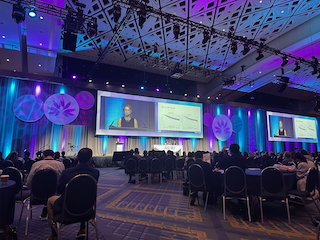Osteoarthritis (OA) is a common and debilitating joint disease affecting millions worldwide. Characterized by cartilage degeneration, inflammation, and chronic pain, OA significantly impacts mobility and quality of life. While conventional treatments such as pain medications, physical therapy, and surgery offer relief, many patients seek alternative, less invasive options. One emerging approach gaining attention is low-dose radiation therapy (LDRT) for osteoarthritis.
What is Low-Dose Radiation Therapy (LDRT)?
LDRT involves applying small doses of ionizing radiation (usually between 0.3 and 1.0 Gy per fraction) to affected joints. Unlike high-dose radiation used in cancer treatments, LDRT has an anti-inflammatory and pain-relieving effect rather than a destructive one. This therapy has been used in Europe for decades, particularly in Germany, where it is a well-established treatment for degenerative and inflammatory joint diseases.
How Does LDRT Work?
The exact mechanisms of LDRT for osteoarthritis are still being researched, but it is believed to work by:
- Reducing inflammation: Radiation at low doses modulates immune responses, decreasing the activity of pro-inflammatory cytokines.
- Alleviating pain: By reducing joint inflammation and swelling, LDRT helps lessen pain and improve function.
- Stimulating tissue repair: Some studies suggest that radiation may promote cell regeneration and slow down cartilage degradation.
Clinical Evidence and Effectiveness
Several studies have evaluated the effectiveness of LDRT in managing osteoarthritis pain. Research shows that 50-70% of patients experience significant pain relief after treatment, with effects lasting for months or even years in some cases. Additionally, LDRT has been reported to improve joint function and reduce the need for pain medication.
A 2020 review of clinical trials in Germany found that patients with knee, hip, and hand osteoarthritis reported improvements in pain levels and daily mobility after undergoing LDRT. These findings suggest that radiation therapy can be an effective and well-tolerated treatment option for individuals with chronic joint pain.
Who Can Benefit from LDRT?
LDRT may be an option for patients who:
- Have moderate to severe osteoarthritis that does not respond to conventional treatments.
- Are not candidates for surgery or wish to delay joint replacement procedures.
- Experience chronic inflammation and persistent pain despite medication and physical therapy.
Safety and Side Effects
Because the radiation doses used in LDRT are very low, the risk of adverse effects is minimal. Unlike high-dose radiation, LDRT does not cause significant tissue damage or increase cancer risk. Most patients tolerate the treatment well, with little to no side effects.
Future of LDRT for Osteoarthritis
As interest in LDRT grows, more clinical trials are needed to determine optimal dosing schedules, long-term effectiveness, and best practices for integrating radiation therapy into OA treatment plans. With ongoing research, LDRT could become a widely accepted non-invasive alternative for pain management in osteoarthritis patients.
Conclusion
Low-dose radiation therapy is an exciting and promising treatment for osteoarthritis. By reducing inflammation, alleviating pain, and improving joint function, LDRT offers new hope for patients seeking non-surgical relief. As research continues, LDRT could play a significant role in the future of osteoarthritis management, providing long-term benefits with minimal risks.
If you or a loved one suffer from chronic osteoarthritis pain and are looking for alternative treatments, consult with a radiation oncologist to determine if low-dose radiation therapy is right for you.


